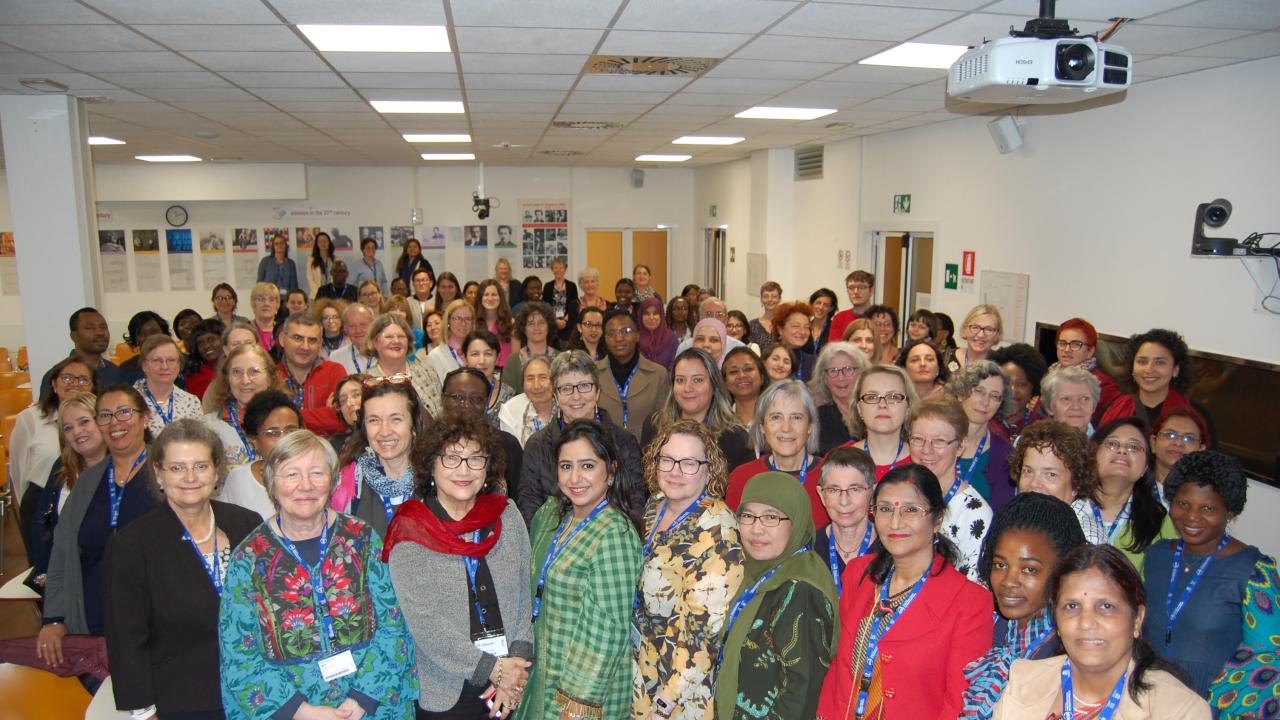
ICTP is hosting this week the “Conference on Global Approach to the Gender Gap in Mathematical, Computing and Natural Sciences: How to Measure It, How to Reduce It?”. The conference marks the end of a three-year collaborative project called “Gender Gap in Science”, whose goals were to study the barriers that prevent women from achieving success in science research and to produce data to eliminate these barriers and promote equity in science.
The multidisciplinary project was funded by the International Science Council and includes 11 international scientific organizations, such as the International Mathematical Union (IMU), the International Union for Pure and Applied Chemistry (IUPAC), the International Union for Pure and Applied Physics (IUPAP), UNESCO and the Organization for Women in Science for the Developing World (OWSD).
Marie-Françoise Roy, emeritus professor of mathematics at the University of Rennes 1, France, and IMU's chair of the Committee for Women in Mathematics, is also a director of this conference and explained that the project will actually last two more months, with the final recommendations and conclusions to be presented in December. “The main goal of this event is to distribute the preliminary report of the project and then to receive an input from all the participants,” said Roy. “At the end of this week all the suggestions and feedback will be put together and every participant will feel that they played a significant role in designing the final recommendations.”
The project, which started in 2017, had three main tasks to complete. The first one was the “Global Survey of Mathematical, Computing, and Natural Scientists”. This survey collected the answers of more than 30,000 respondents in more than 150 countries. Its objective was to ask scientists, both male and female, about their career experiences and about the challenges that they encountered to achieve success in academia. The collected data will allow a deep overview of the situation, focusing on women working in the fields of physics, chemistry, astronomy, biology, computer science, mathematics, and history and philosophy of science and technology.
“At the moment, the main message that we can draw from the survey is that the gender gap is very real,” said Roy. “This is true globally and almost in every discipline, although there are some fields like biology in which women are more present, if compared to other fields like physics or mathematics. Particularly significant is the evidence of gender discrimination and sexual harassment.”
The project's second task was the “Joint Data-backed Study of Publication Patterns”, an online tool aimed at investigating the gender imbalance of the scientific publications output between female and male researchers, across countries and fields of research. “What we can see is that the proportion of women publishing science papers is increasing over time,” said Roy. “But we can also see that women scientist are not more present than they were in the past in the highest institutions and journals, and therefore they never seem to reach the top level in research.”
The third and final task of the project was the “Database of Good Practices for Girls and Young Women, Parents, and Organizations”, intended to work as a collector of all the initiatives that exist around the world to encourage the involvement of women in science.
“The database is already online on the IMU website,” added Roy, “and is expected to expand with the addition of more and more initiatives, like the Career Development Workshop for Women in Physics that took place last week here at ICTP.”
The organizers chose ICTP as the ideal environment for hosting such a conference. “We wanted to do something at an international level, and ICTP has been crucial in helping us support people coming from developing countries,” said Roy.
In December the project will be concluded, but many things still need to be done. The organizers hope that the activities will continue for at least another year, to finalize the tools developed over the past three years and start new initiatives.
“I am very optimistic about the future of the project,” said Roy, “but for the moment we are not sure of what will happen. We are happy with what we were able to do until now, but the long-term plan is to produce useful tools capable of living after the end of the project.”
---- Marina Menga
















